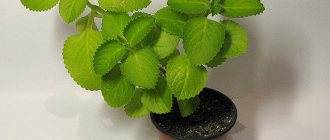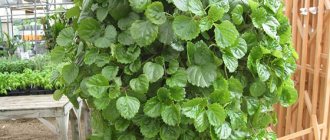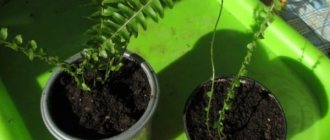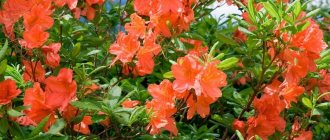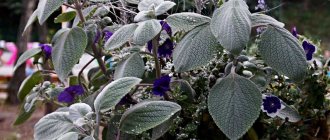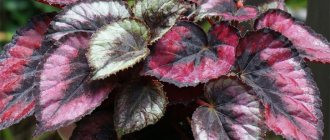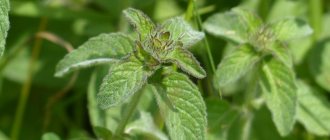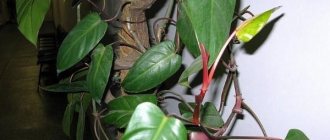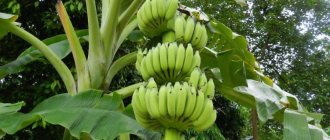Botanical description
Plectranthus (lat. Plectranthus) is a subtropical decorative deciduous semi-succulent plant.
The genus belongs to the Lamiaceae family, there are about 400 species in total.
It is characterized by:
- Height - from 15 to 100 cm.
- The stems are deep green or brownish-red in color, tetrahedral thin, often bare or covered with hairs, erect or creeping.
- The leaves are thick, fluffy with a strong scent, up to 10 cm in length. Rounded, heart-shaped, triangular with jagged edges, arranged crosswise.
- The root system is fibrous and goes shallow into the ground.
- Flowers are miniature bell-shaped buds of pink, white, lilac or violet, consisting of 5 petals fused at the base. They are located in racemose or umbrella-shaped inflorescences of 6-10 pieces each. After pollination, fruits with 4 nuts are formed.
You can learn about all types of mint here.
What does plectranthus suffer from?
In its natural environment, plectranthus is considered a plant with a strong immune system that is not susceptible to disease. But in enclosed spaces, the proximity of other flowers, dry air, lack or excess of moisture can cause illness or even death.
- Downy mildew (powdery mildew) is a gray coating from the underside of a leaf. The reason is hypothermia and/or waterlogging. What we treat with: Glyocladin, Fitosporin, fungicidal drugs.
- Spider mite. Signs: thin cobwebs and tiny whitish spots. Reason for appearance: proximity to a diseased plant, low humidity level at elevated air temperatures. The problem is complicated by the fact that mites in general and spider mites in particular lay eggs everywhere, including in the ground. Therefore, the first thing to do is to completely change the land. The pest can be destroyed only with the help of acaricidal agents.
- Yellowing and drying of the leaves indicates uncomfortable living conditions. Reconsider the location and frequency of watering.
Useful properties and contraindications
The plant releases phytoncides that have an impact on the environment. Beneficial properties include:
- Improves the health of the air in the house by killing pathogenic bacteria.
- Repels moths, flies, mosquitoes and other insects.
- Has a medicinal effect.
- Increases a person’s well-being - considered another version of the “money tree”.
Plectranthus has contraindications:
- It is not recommended to take tea and its products for pregnant and lactating women and children under 12 years of age.
- May cause irritation to people with sensitive skin.
- May cause harm to hypotensive patients and people with varicose veins.
You can learn more about the benefits and harms of mint from this article.
Diseases and pests, control methods
Plectranthus is rarely affected by diseases and pests. But with excess moisture it can be affected by root rot and powdery mildew. In the initial stages of the disease, you can water the plant with a whey solution. In more serious cases, the bush needs to be dug up, the roots and stems treated with a fungicide and replanted in a fresh substrate. To avoid diseases in the future, you need to regulate the irrigation system.
Occasionally, indoor mint is attacked by pests:
- spider mite;
- aphid;
- scale insect
You can quickly get rid of parasites only with the help of chemical insecticides. First, it is good to bathe the flower in the shower to wash away adult insects.
Allow the plant to dry and spray with one of the following preparations:
- Aktara;
- Fitoverm;
- Karbofos;
- Aktellik;
- Decis.
Smell and taste
Plectranthus is a spicy-aromatic plant. Its leaves smell of camphor, lungwort and menthol notes with a mint aroma.
Plectranthus is aromatic in taste and smell, reminiscent of oregano and thyme and has a pleasant lemon-mint scent.
Decorative flower varieties: names and photos
Plectranthus is represented by numerous plant varieties. The most popular among them are several varieties.
Fragrant
Aromatic or fragrant plectranthus (lat. Plectranthus amboinicus) - can reach a height of 2 m. The stems are greenish-purple in color, the leaf plates are heart-shaped or round in shape with a blunt apex. Petioles with pubescence, flowers of a pale blue hue. It is this variety that is used to prepare decoctions and teas.
coleus-shaped
Plectranthus coleoides (lat. Plectranthus coleoides) - reaches a height of 1 m. The shoots are straight, tetrahedral with pubescence. The leaves are fleecy up to 8 cm with a crenate edge and a white border. The flowers are white.
Shrub or moth tree
Plectranthus fruticosus is a branched shrub. The height of the plant is about 100 cm, the stem is pubescent. The leaves are broadly oval in shape with a pointed tip, up to 10 cm long. The flowers are light blue.
The plant has a pungent odor that repels moths.
Ertendahl
Plectranthus oertendahlii (lat. Plectranthus oertendahlii) is a shrub up to 0.2 m high. It has creeping shoots up to 0.4 m long. The leaves are greenish-brown in color up to 6 cm, have a broadly ovate shape with a blunt apex. On the underside of the leaves there is light red pubescence. The leaf plates feel like velvet to the touch. The flowers are white or pale lilac bells, the length of the inflorescences is about 0.3 m.
Mona Lavender
Plectranthus Mona Lavender (lat. Plectranthus Mona Lavender) is an upright shrub, a hybrid. The stems are brownish-brown in color, the leaf blades are oval with jagged edges of a dark green color, shiny, on the underside they are purple with pubescence, odorless. The flowers are tubular-shaped bells of bluish-violet color with blue specks.
Hadiensis (felt)
Plectranthus hadiensis (lat. Plectranthus hadiensis) - reaches a height of 0.7 m. The leaves are fleshy, light green, broadly ovoid in shape. The stems and leaves are pubescent. Flower color is purple.
With age, the trunk becomes woody.
Ernst
Ernst's plectranthus (lat. Plectranthus ernestii) is a perennial subshrub that reaches a height of 0.5 m. In its lower part, the stems form a gray-yellow ten-centimeter trunk - the caudex. The leaves are light green, oval-shaped, serrated. The flowers are white, lilac-blue.
Forster
Plectranthus forsteri (lat. Plectranthus forsteri) is a horizontal plant, its stems cascade and reach a length of 1 m. The leaf blades are green, oval with small villi, covered with large white spots. Exudes the smell of camphor. The flowers are white.
Whorled
Plectranthus verticillatus is a semi-shrub plant. Height from 50 to 150 cm. Distinguished by the purple color of the stems. The leaves are ovate with a rounded top, bright green. The leaf may have pubescence on the front side and red veins on the back. Inflorescences are small racemes of white or pink-purple color.
Southern
Southern plectranthus, or Scandinavian ivy (lat. Plectranthus australis) - bright green foliage with a waxy coating. The leaf shape is round, the edges are jagged. Leaf length is up to 7 cm. The stems are weak, hanging down under the weight of the foliage.
The peculiarity of the plant is the absence of odor from the leaves.
Oakleaf
Plectranthus venteri is a plant with erect stems. The leaves are leathery, covered with silvery hair and shaped like oak foliage, exuding a pine aroma. The plant has whorled inflorescences on long stalks - delicate blue flowers.
Potty care at home
Plectranthus is an unpretentious plant, its care includes:
- Temperature regime - comfort temperature 20-22 °C; in winter, colder conditions are acceptable, but not lower than 15 °C. Does not tolerate dry hot air.
- Watering - during the growth period it requires abundant watering, especially at air temperatures above 22 ° C. In winter, it is enough to water once every 4 days to avoid stagnation of water and rotting.
- Location - window sill with good lighting, but without direct exposure to sunlight. In this case, the leaves retain their rich color. In the sun they turn yellow and curl.
- Container - high pots - for the normal development of a powerful root system.
- The soil is loose, well permeable to air and moisture.
- Reproduction - cuttings.
- Diseases - downy mildew develops in damp, cold environmental conditions.
Caring for the plant at home includes replanting and pruning.
Transfer
The plant is replanted in the spring before it reaches 5 years of age. For replanting, use a pot slightly larger in diameter than the previous one. Drainage is placed at the bottom.
On the day before planting, the plant is watered abundantly. After removal, the plectranthus is placed in a new pot along with a lump of earth, without destroying the lump.
Add ready-made nutrient soil to empty spaces or make it yourself from humus, turf, leaf soil, river sand and peat in a ratio of 2:2:1:0.5:0.5.
When the plant reaches 5 years of age, replanting is carried out as necessary.
Trimming
At the end of winter - beginning of spring, pruning is carried out. At the same time, old stems are removed. The plant rejuvenates and produces new shoots. In order to form a beautiful ornamental bush during the period of active growth, pinching is carried out.
Read more about caring for and growing plants on a windowsill here.
Planting and caring for plectranthus
- Flowering: grown as an ornamental foliage plant.
- Lighting: bright diffused light, but partial shade is better.
- Temperature: during the growing season – 18-25 ˚C, in winter – 12-16 ˚C.
- Watering: frequent and abundant, as soon as the soil in the pot dries to a depth of 2 cm.
- Air humidity: in extreme heat and when heating devices are on, it is recommended to spray the leaves daily with water at room temperature or keep the plant on a tray with wet pebbles.
- Feeding: during the growing season - 2 times a month with complex fertilizers for deciduous plants. The rest of the time, no feeding is needed.
- Pruning and pinching: in the spring the shoots are shortened by half, and during the growth period the tops are regularly pinched.
- Replanting: up to four years - annually, at the very beginning of the growing season, then - as needed.
- Reproduction: cuttings and dividing the bush.
- Pests: aphids, mealybugs and spider mites.
- Diseases: downy mildew (downy mildew).
- Properties: leaves of some varieties have choleretic, diaphoretic, laxative and analgesic effects.
Read more about growing plectranthus below.
Other uses
Plectranthus is not registered in the register of medicines, but is widely used in folk medicine as an anti-inflammatory, diuretic, antimicrobial, expectorant, and analgesic. Decoctions of the leaves are used for mosquito bites, midges, insomnia and nervous fatigue.
In cooking it is used as a substitute for oregano for beef, lamb and poultry dishes. Dried leaves are used in everyday life, the aroma of which repels mosquitoes, flies and moths, and promotes concentration when working on the computer. In cosmetology it is used to shine and restore split ends of hair.
Only Plectranthus aromaticum is used for food and medicinal purposes.
Reproduction methods
Kalanchoe: home care and main family species
It is not difficult to propagate homemade mint plectranthus; the main thing is to follow the sequence of steps and do everything carefully so as not to damage the plant.
Cuttings
In winter or spring, the plant is pruned. This is necessary to create the shape of the plant, get rid of weak stems, and remove old leaves. At this time, you can prepare the shoots for transplantation.
Sequence of actions when propagating by cuttings:
- Shoots with at least three buds are harvested;
- Drainage and prepared soil are poured into the pots. It is necessary to disinfect and moisten it in advance;
- The cuttings are placed in the soil, making small holes with a pencil. You can plant several shoots in one pot, then the bush will turn out more lush;
- Water young plants as the top layer of soil dries.
Rooting in water
After 1-2 weeks, the plant usually develops roots. This is evidenced by new leaves growing on the stem. You can also root cuttings in water or sand.
Dividing the bush
Reproduction by dividing the bush is carried out during plant transplantation. After the flower is removed from the pot, carefully shake off the roots and cut with a sharp knife. It is important to disinfect it in advance to prevent infection of the plant.
The cut sites are processed:
- ash;
- activated carbon powder.
New plants are placed in a pot and the free spaces are filled with soil. Before planting, moisten the soil.
